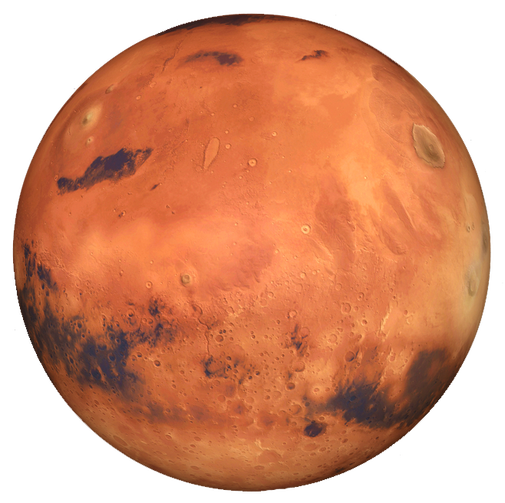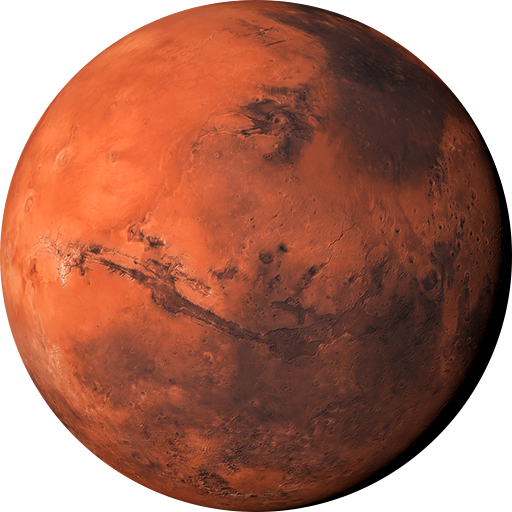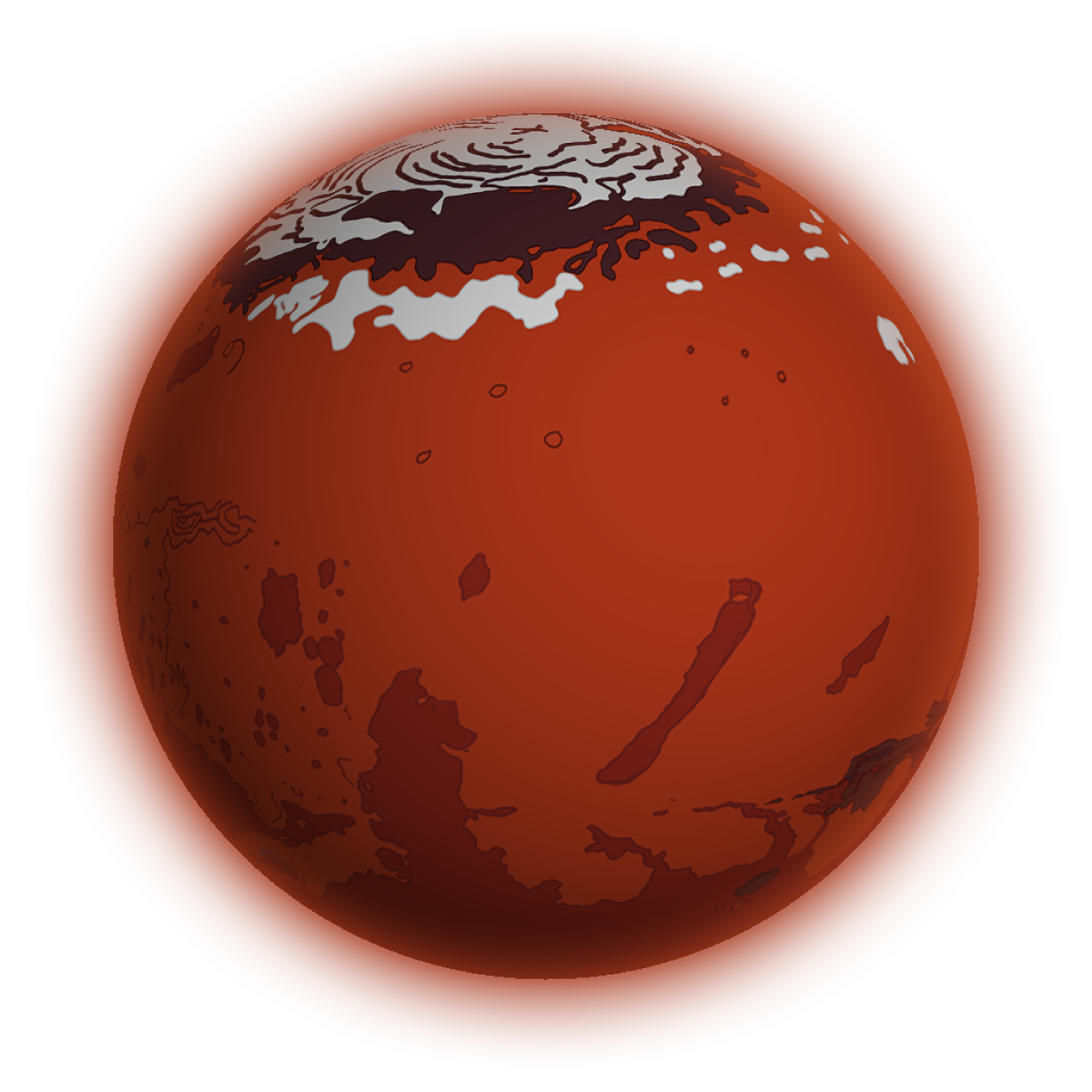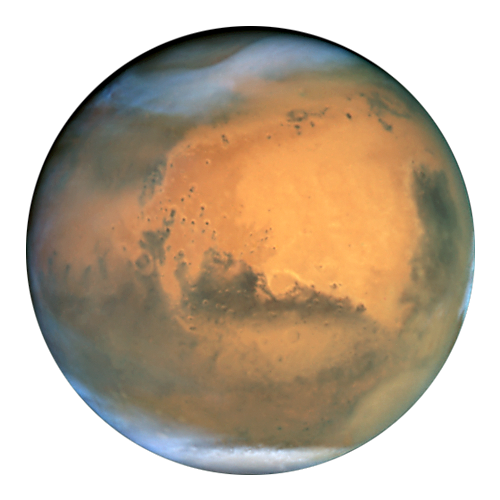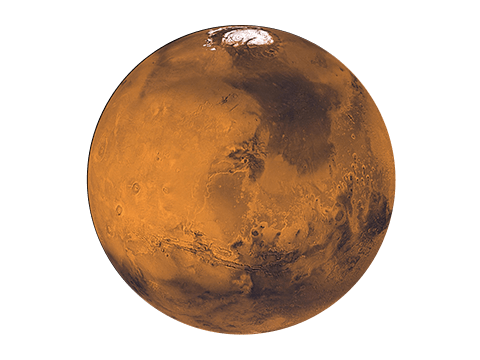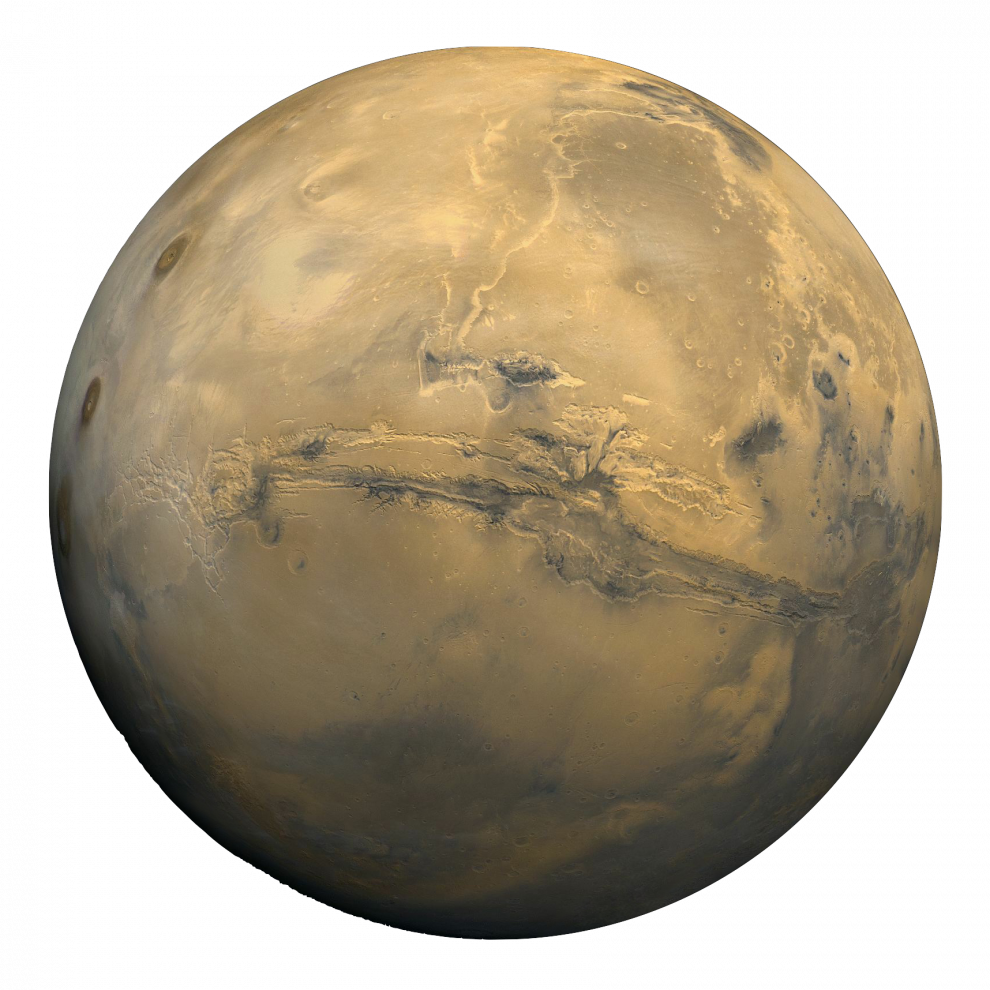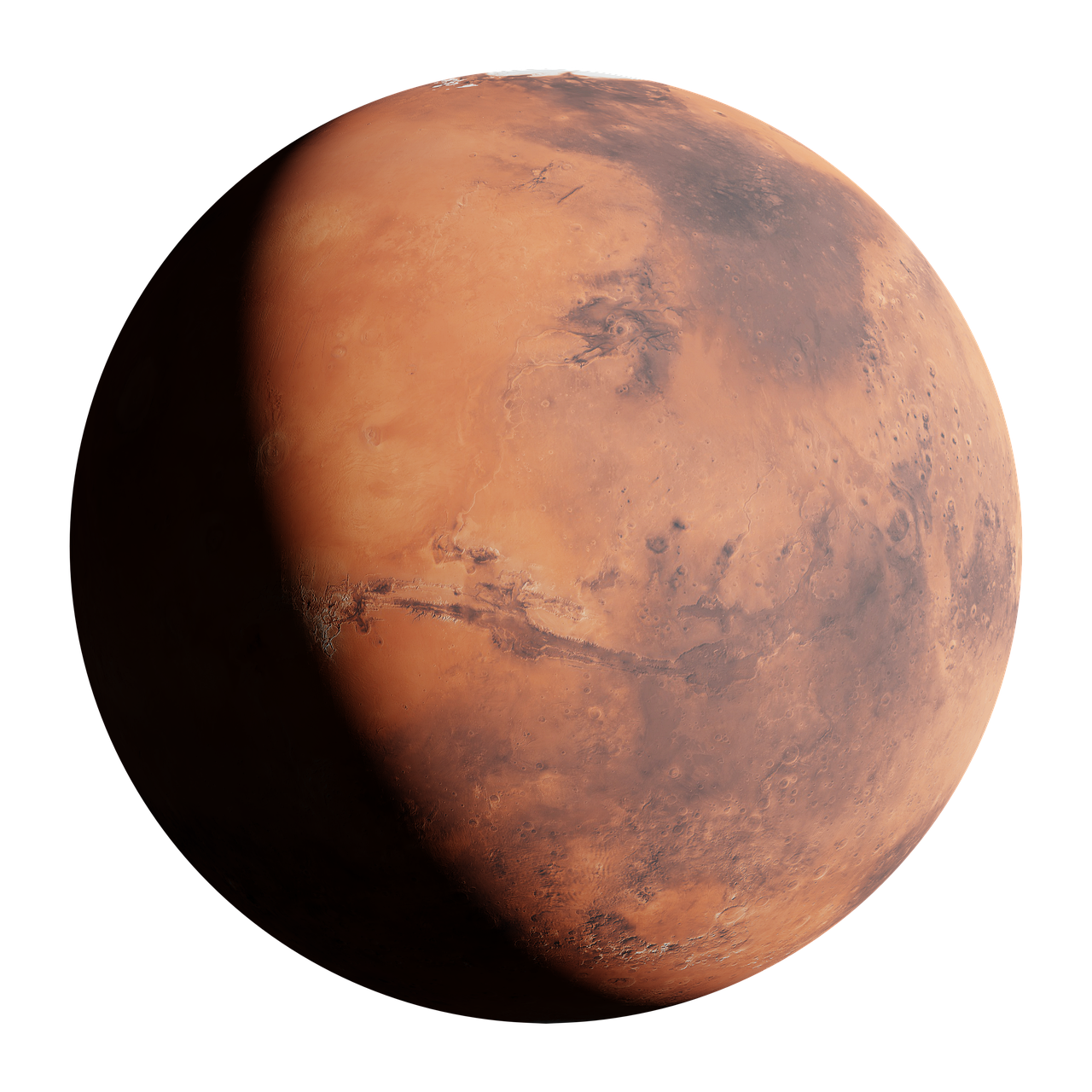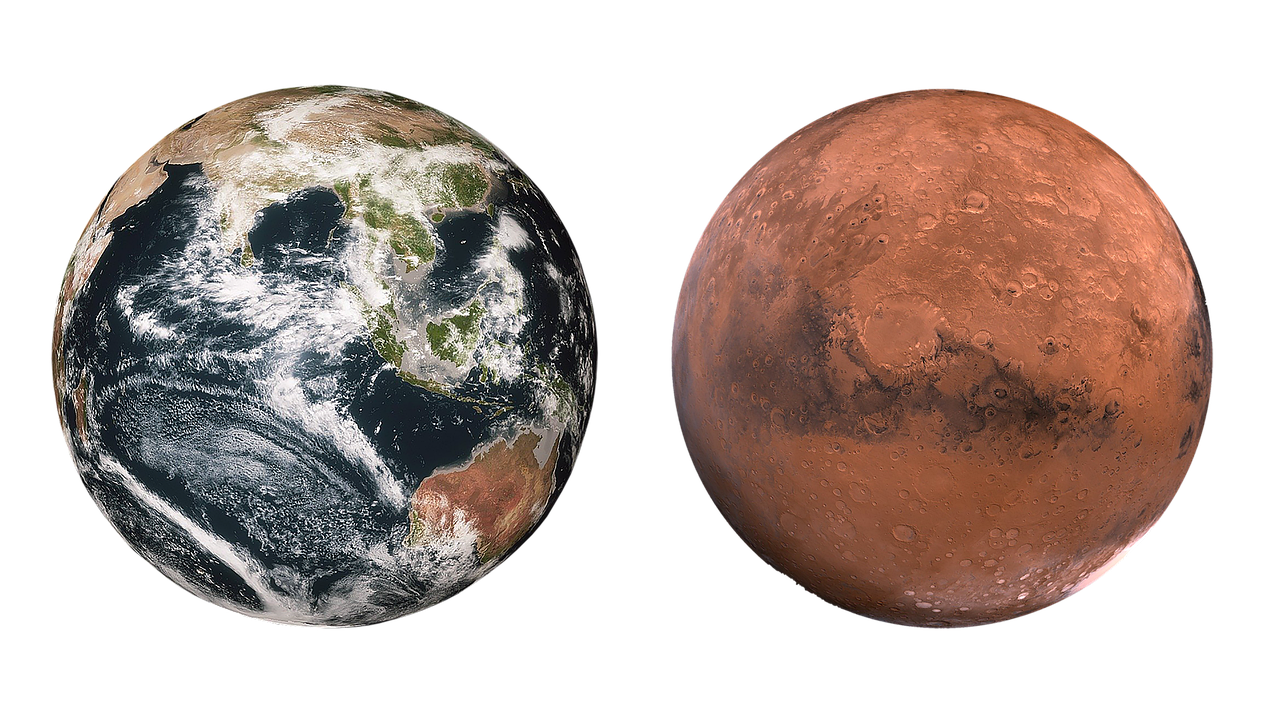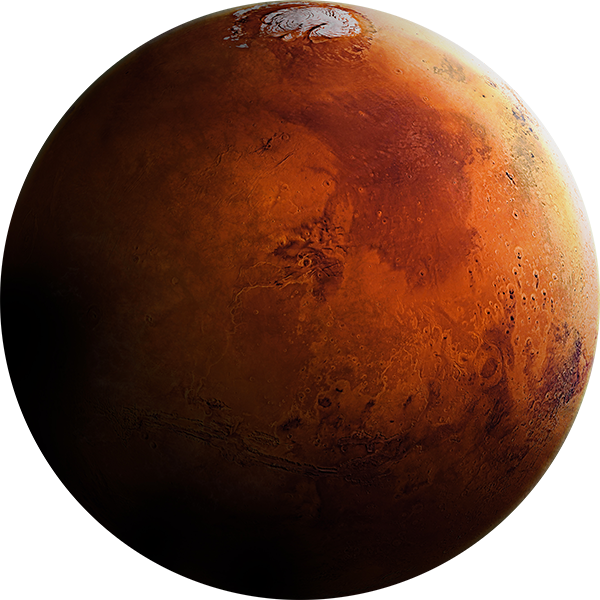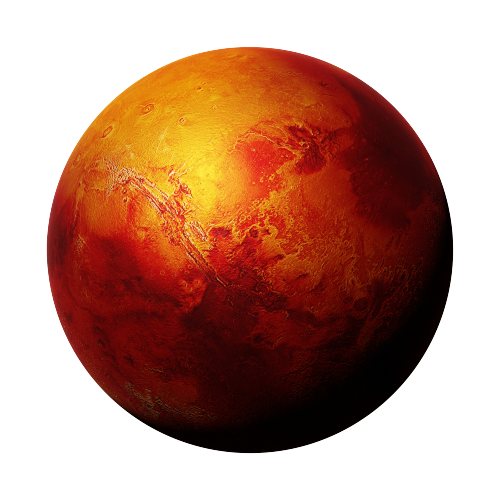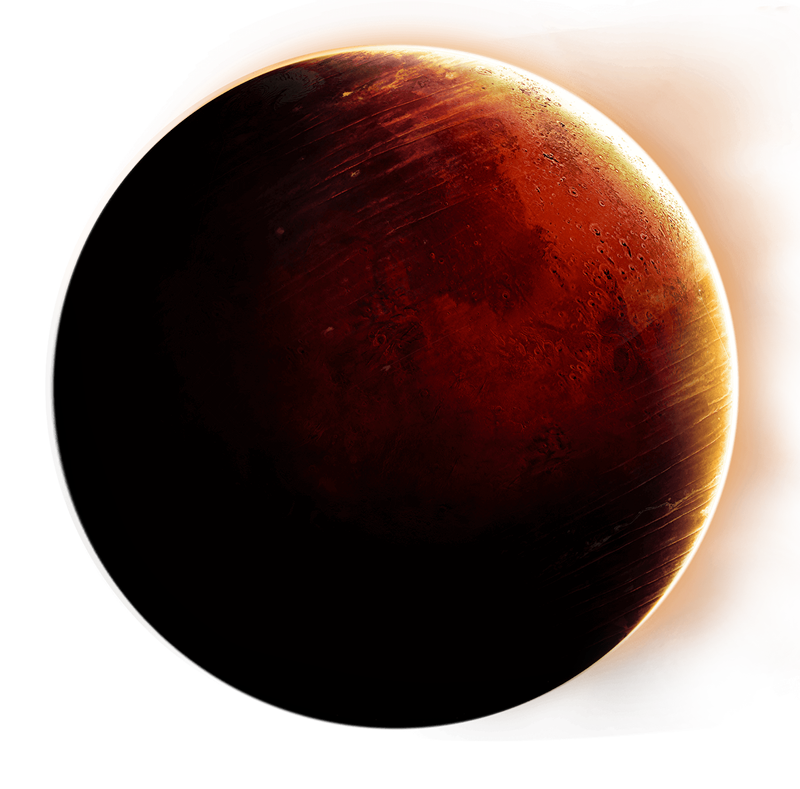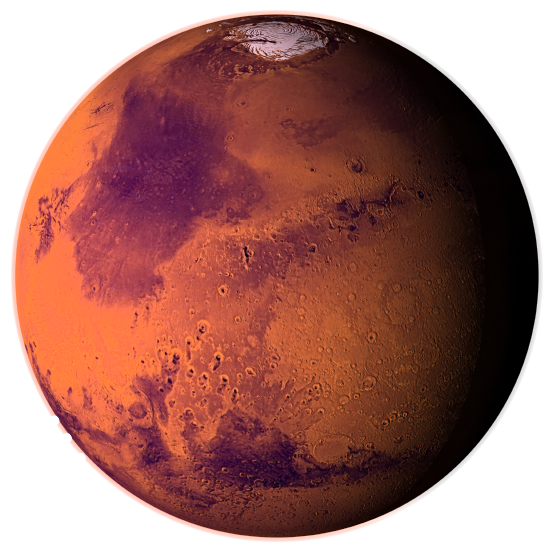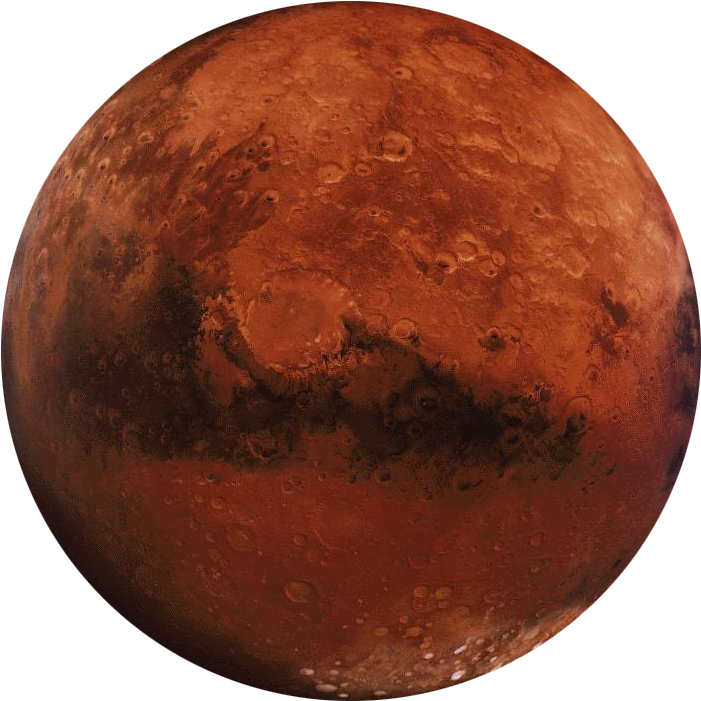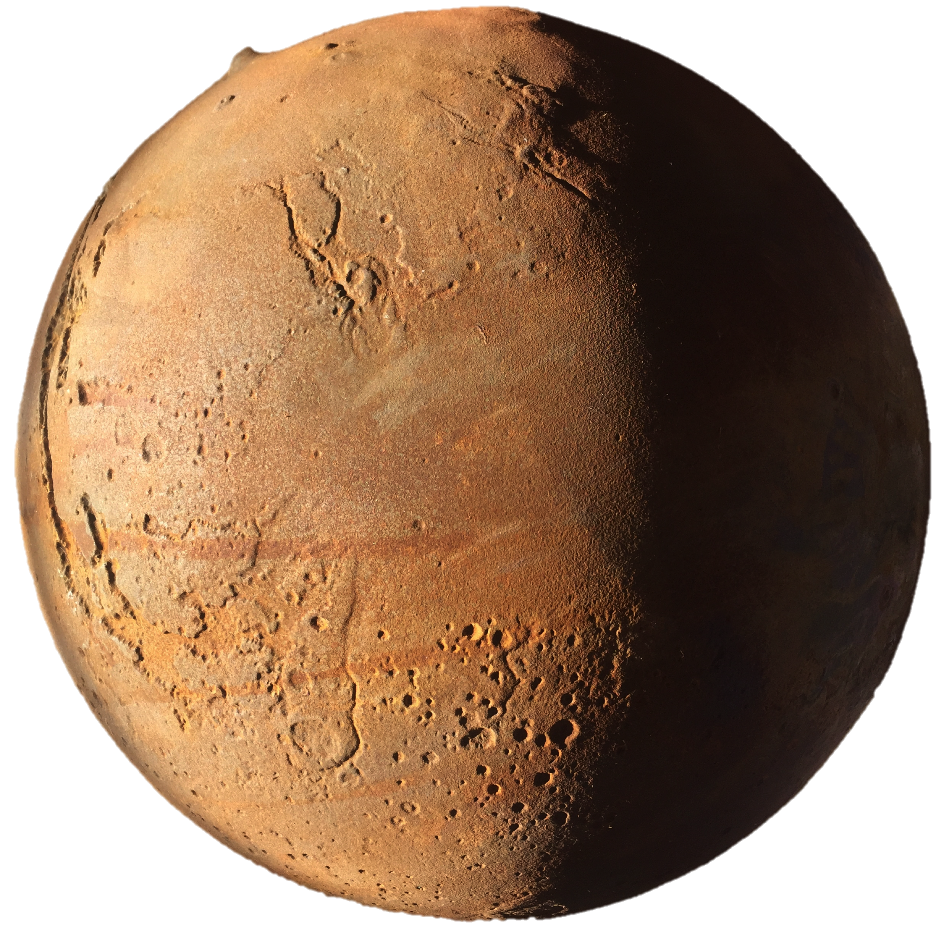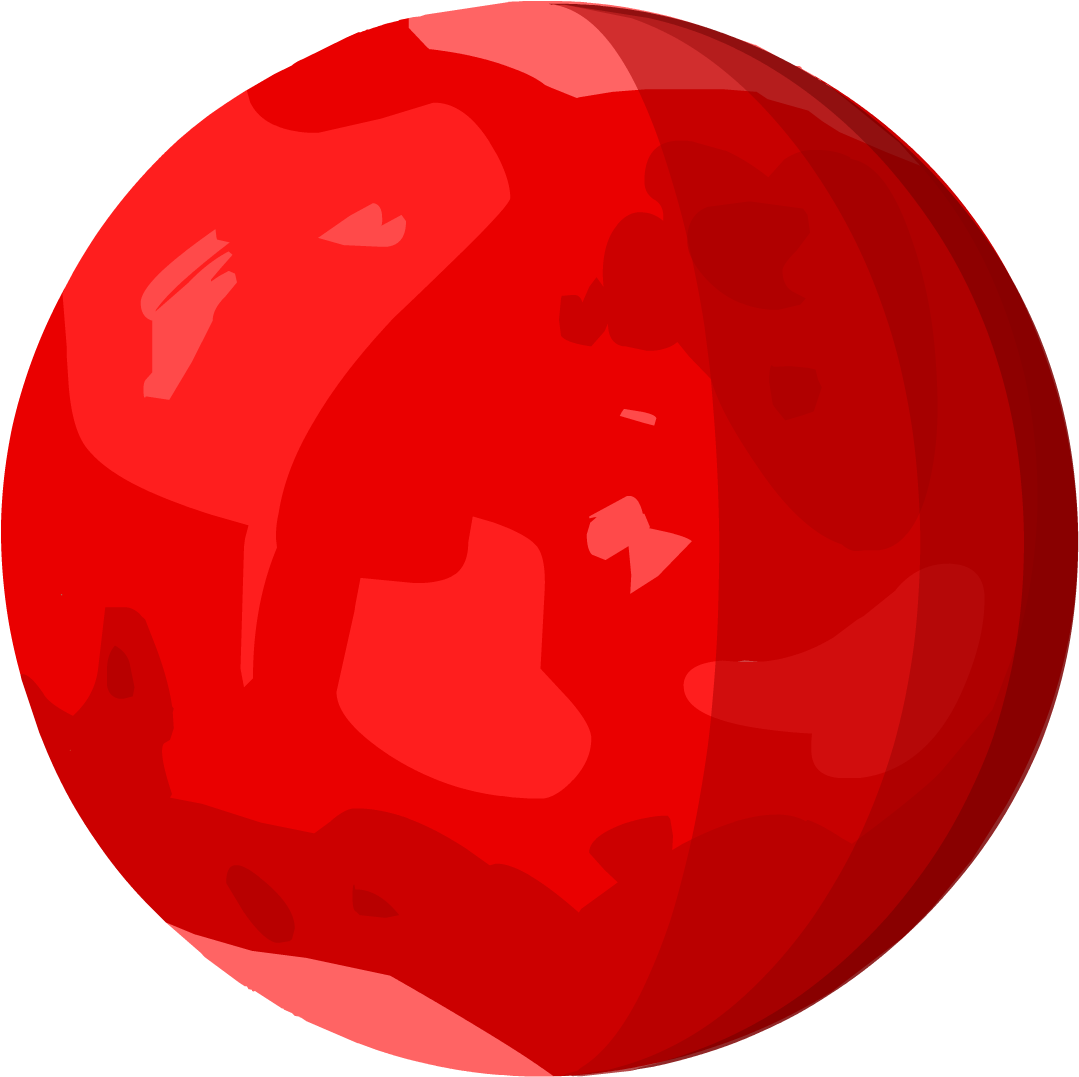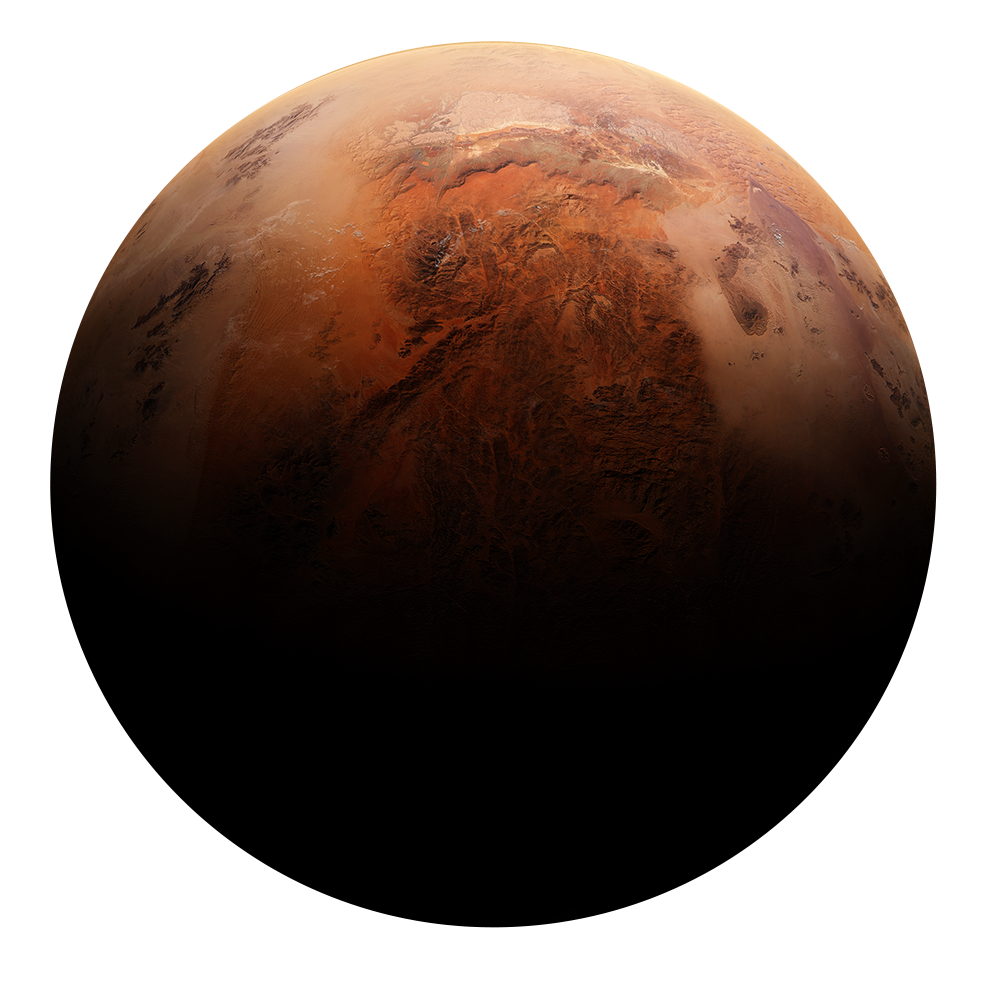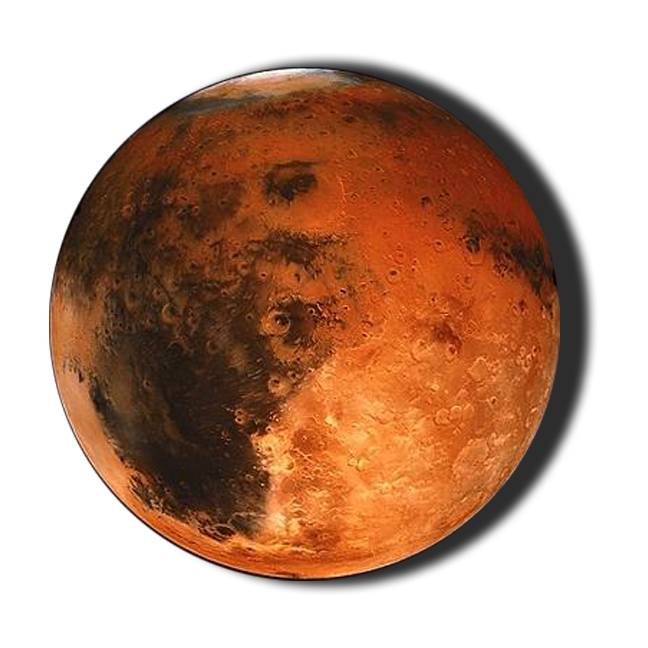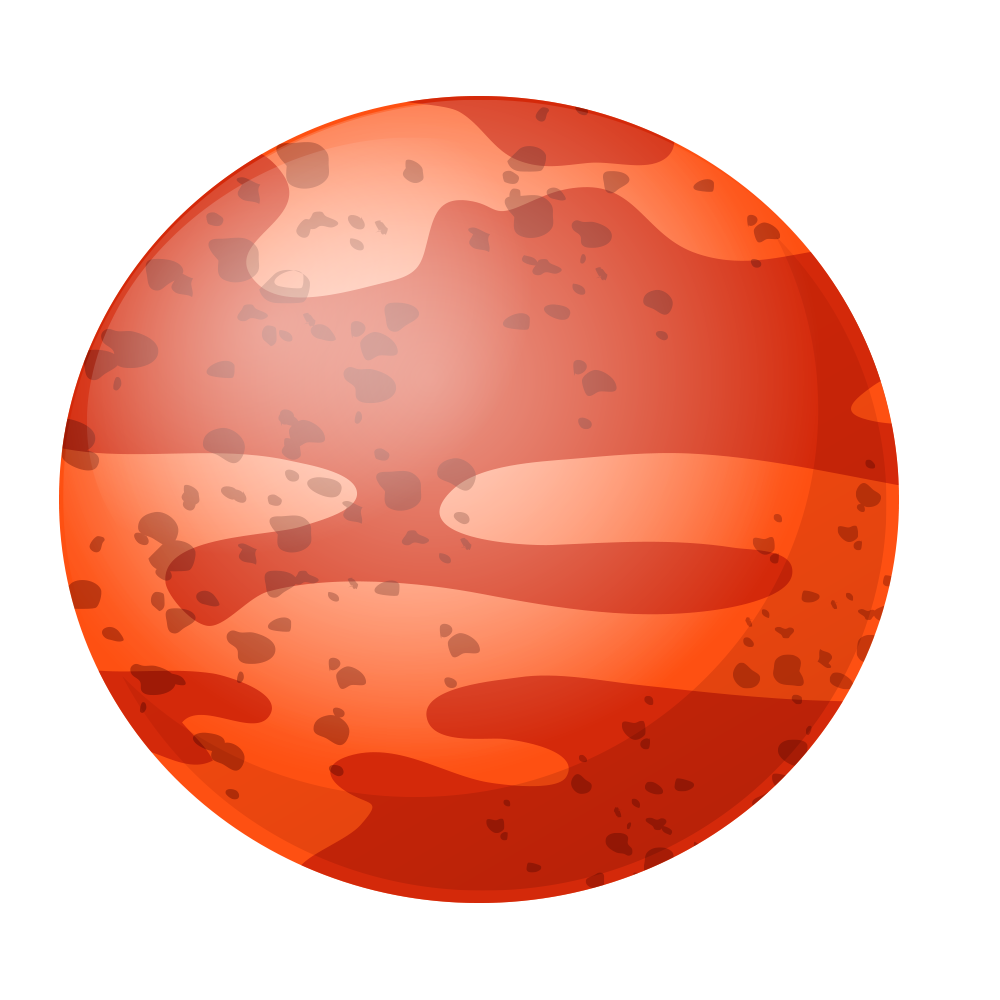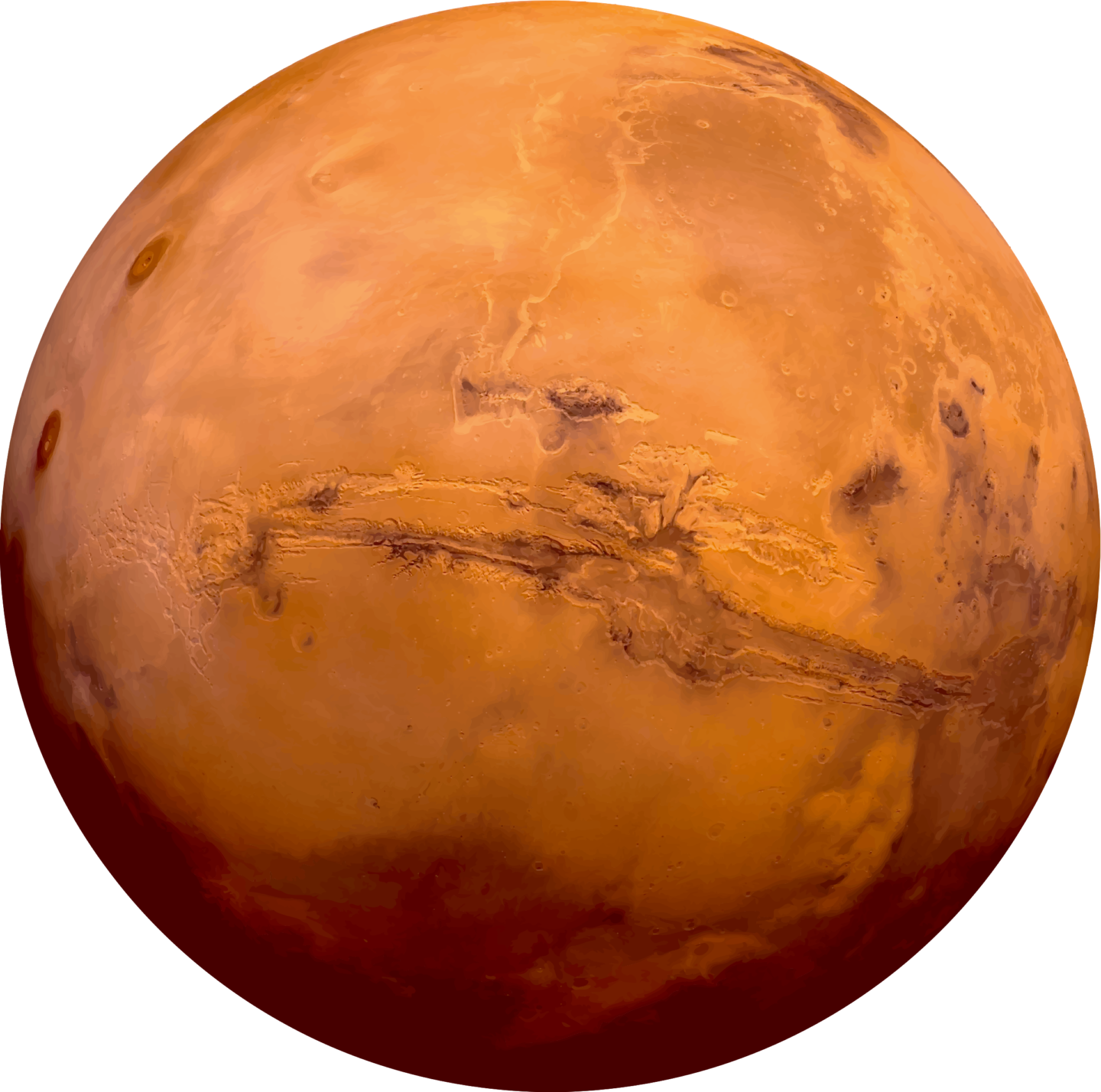Download top and best high-quality free Mars PNG Transparent Images backgrounds available in various sizes. To view the full PNG size resolution click on any of the below image thumbnail.
License Info: Creative Commons 4.0 BY-NC
Mars is the fourth planet from the Sun and the Solar System’s second-smallest planet, only Mercury being smaller. Mars is known as the “Red Planet” in English because it bears the name of the Roman god of battle. The latter refers to the effect of the iron oxide present on Mars’s surface, which gives it a reddish hue that sets it apart from other observable celestial bodies. Mars is a terrestrial planet with a thin atmosphere and surface characteristics that are similar to the Moon’s impact craters and Earth’s valleys, deserts, and polar ice caps.
Because the rotational period and inclination of the rotating axis relative to the ecliptic plane are identical, the days and seasons are equivalent to those of Earth. Mars is home to Olympus Mons, the Solar System’s tallest volcano and highest known peak, as well as Valles Marineris, one of the Solar System’s greatest canyons. The smooth Borealis basin, which encompasses 40% of the earth in the Northern Hemisphere, might represent a massive impact structure. Phobos and Deimos, Mars’ two moons, are tiny and oddly shaped. These might be captured asteroids, comparable to Mars trojan 5261 Eureka.
Several unmanned spacecraft have visited Mars. Mariner 4 was the first spacecraft to visit Mars, arriving on the planet on July 15, 1965, after being launched by NASA on November 28, 1964. Mariner 4 discovered the weak Martian radiation belt, which is only 0.1 percent that of Earth, and took the first deep-space photos of another planet. The Soviet Mars 3 mission comprised a lander that made a gentle landing in December 1971, but communication was lost seconds later. Viking 1 made the first successful landing on the Martian surface on July 20, 1976. The Mars Pathfinder spacecraft landed on Mars on July 4, 1997, and on July 5, its rover, Sojourner, the first robotic rover to operate on Mars, was unleashed. On December 25, 2003, the Mars Express orbiter, the first European Space Agency (ESA) mission to visit Mars, was launched into orbit. Spirit and Opportunity, NASA’s Mars Exploration Rovers, arrived on Mars in January 2004; Spirit worked until March 22, 2010, and Opportunity until June 10, 2018. NASA’s Curiosity rover touched down on Mars on August 6, 2012, as part of its Mars Science Laboratory (MSL) mission to study the planet’s environment and geology. When its inaugural interplanetary mission, the Mars Orbiter Mission spacecraft, arrived in orbit on September 24, 2014, the Indian Space Research Organisation (ISRO) became the fourth space agency to visit Mars. On February 9, 2021, the United Arab Emirates became the fifth country to successfully launch a mission to Mars, inserting an orbiter into the Martian atmosphere. On February 10, 2021, the Tianwen-1 spacecraft of the Chinese National Space Administration (CNSA) entered Martian orbit. On February 18, 2021, NASA’s Perseverance rover and Ingenuity chopper successfully landed on Mars. On April 19, 2021, Ingenuity conducted the first powered controlled flight by an aircraft outside of Earth, lifting off vertically, hovering, and landing on Mars. CNSA’s Tianwen-1 lander and Zhurong rover successfully arrived on Mars on May 14, 2021. The Zhurong rover was successfully placed on Mars on May 22, 2021, becoming China the second country after the United States to do it.
There are studies underway to determine if Mars was ever habitable, as well as the potential of present life. There are plans for astrobiology missions, such as the Rosalind Franklin rover from the European Space Agency. Due to the low atmospheric pressure on Mars, which is less than 1% of the atmospheric pressure on Earth, liquid water can only persist at the lowest elevations for brief periods of time. Water appears to make up the majority of the two polar ice caps. If the water ice in the south polar ice cap were to melt, it would blanket the planet’s surface to a depth of 11 meters (36 ft). NASA announced in November 2016 that it has discovered a substantial quantity of subsurface ice in the Utopia Planitia area. The amount of water found is considered to be similar to Lake Superior’s whole volume.
Mars, as well as its reddish tint, can be seen with the naked eye from Earth. It has an apparent magnitude of 2.94, which is only exceeded by Venus, the Moon, and the Sun. Because of Earth’s atmosphere, optical ground-based telescopes are often limited to discerning objects around 300 kilometers (190 miles) across when Earth and Mars are closest.
Download Mars PNG images transparent gallery.
- Mars PNG Picture
Resolution: 505 × 503
Size: 352 KB
Image Format: .png
Download
- Mars PNG HD Image
Resolution: 512 × 512
Size: 376 KB
Image Format: .png
Download
- Mars Planet PNG File
Resolution: 565 × 559
Size: 40 KB
Image Format: .png
Download
- Mars PNG Image HD
Resolution: 1200 × 1200
Size: 418 KB
Image Format: .png
Download
- Mars No Background
Resolution: 500 × 500
Size: 261 KB
Image Format: .png
Download
- Mars PNG
Resolution: 800 × 800
Size: 17 KB
Image Format: .png
Download
- Mars PNG Pic
Resolution: 480 × 360
Size: 65 KB
Image Format: .png
Download
- Mars Planet PNG Image
Resolution: 990 × 990
Size: 956 KB
Image Format: .png
Download
- Mars PNG File
Resolution: 1280 × 1280
Size: 1479 KB
Image Format: .png
Download
- Mars Planet PNG Photo
Resolution: 1280 × 720
Size: 1286 KB
Image Format: .png
Download
- Mars PNG Image
Resolution: 600 × 600
Size: 516 KB
Image Format: .png
Download
- Mars Planet PNG Cutout
Resolution: 500 × 500
Size: 291 KB
Image Format: .png
Download
- Mars PNG Photo
Resolution: 800 × 789
Size: 682 KB
Image Format: .png
Download
- Mars PNG Cutout
Resolution: 553 × 553
Size: 416 KB
Image Format: .png
Download
- Mars Planet PNG Images
Resolution: 512 × 512
Size: 47 KB
Image Format: .png
Download
- Mars
Resolution: 800 × 800
Size: 478 KB
Image Format: .png
Download
- Mars Planet
Resolution: 701 × 701
Size: 809 KB
Image Format: .png
Download
- Mars PNG Images
Resolution: 945 × 930
Size: 1516 KB
Image Format: .png
Download
- Mars Planet PNG
Resolution: 1079 × 1077
Size: 58 KB
Image Format: .png
Download
- Mars PNG Photos
Resolution: 1000 × 1000
Size: 755 KB
Image Format: .png
Download
- Mars Transparent
Resolution: 648 × 648
Size: 664 KB
Image Format: .png
Download
- Mars PNG Clipart
Resolution: 1000 × 1000
Size: 241 KB
Image Format: .png
Download
- Mars Planet PNG Pic
Resolution: 1440 × 1428
Size: 1254 KB
Image Format: .png
Download
